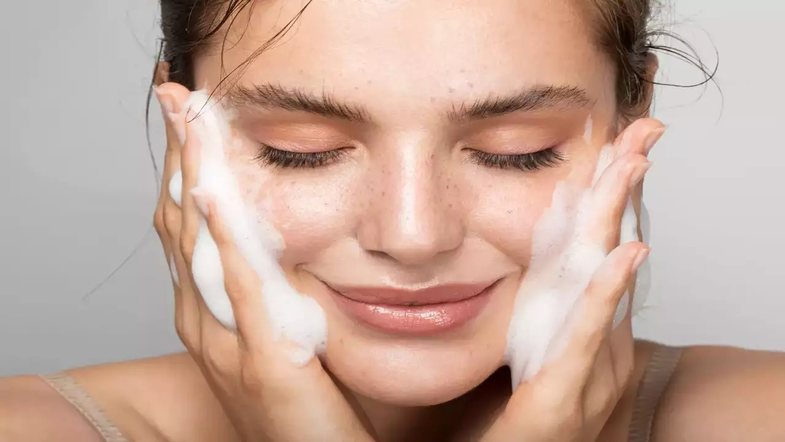
When we think about our skin care routine, washing our face is usually the first step that comes to mind. But the concept of “double cleansing” has gained traction in recent years, offering a more comprehensive approach to skin care. Especially in Korean skin care routines, double cleansing is a must-have step. But what exactly is double cleansing and why should we include it in our routine?
What is double cleansing?
Double cleansing is not just about washing your face twice, but using two different types of cleansing products to more effectively remove impurities from your skin. The first step involves using an oil-based cleanser or even micellar water to remove makeup residue, as well as sunscreen that has been on your face all day. Oil or micellar water are ideal for “melting” oils, leaving your skin clean.
The second cleansing phase focuses on a gentle cleanser to remove all other impurities from the skin, such as dust and atmospheric pollutants, without causing irritation or "stripping" the skin of its natural hydration.
Benefits of double cleansing
A clean face is the first and most important step to healthy skin. Applying double cleansing provides a deeper cleanse, allowing the skin to better absorb subsequent care products. By using different types of cleansers, double cleansing ensures that visible and invisible residues are removed.
Who needs double cleansing and when?
Double cleansing isn't necessary for everyone. If you have oily skin or wear makeup every day, you may find that double cleansing every night may be ideal for you. The first step of cleansing will remove the toughest dirt, while the second step will take care of removing dirt that may not be visible to the naked eye.
But if your skin is dry or you don't wear makeup often, double cleansing may not be necessary every day. In these cases, just a gentle cleanser may be enough. Additionally, for those with rosacea, eczema, or particularly sensitive skin, double cleansing can be more aggressive on the skin and cause dryness or irritation.
Suggested articles:







